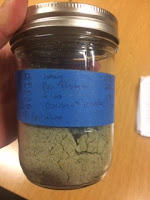Taking care of all our staff is not an extra "want to do" but a critical "need to do". Working in education is a tough job and often lead to compassion fatigue. Take a few minutes to take care of yourself and a colleague today!
SCHOOL LEADERSHIP
7 Ways to Make Teaching a More Sustainable Profession
Tips for school leaders seeking to foster an environment that supports, engages, and motivates teachers.
By Katy Farber
January 15, 2020
Years ago, a new teacher I was mentoring up and left the profession after two years.
She was brilliant, enthusiastic, and well-loved by colleagues, students, and families,
With each day that I work with teachers, I am more convinced that it is vital to the future of public education that we make teaching a more sustainable, humane profession.
Research tells us that fostering strong relationships and giving students voice and agency as well as opportunities for active learning are necessary to engage and motivate them. But aren’t these important for teachers, too? We know that students feel the stress teachers bring to their jobs. Therefore, protecting the professionalism and wellness of teachers will ultimately benefit students, too.
We need schools to be more humane—for the sake of students and teachers. How can school leaders work to make this happen?
1. Protect basic needs: Keep Maslow in mind. How can teachers think about deep and powerful pedagogy if their basic needs are not met? Leaders can build emotionally and physically safe schools by making sure the basics are covered. Schedule time for teachers to use the bathroom, and designate at least one of those bathrooms adults only and gender neutral. Make sure new mothers have a safe and private place to pump. And make sure your teachers’ room has creature comforts like hot coffee and a comfy chair or two.
2. Build belonging: In supportive and strong school environments, teachers feel connected to each other and work as a team. And we know that when teachers collaborate, students benefit. Educational leaders can build a sense of belonging in multiple ways: You might begin every staff meeting with a time for personal connections or a celebration of accomplishments, or set up group norms that foster a safe and supportive culture. End every staff meeting with gratitude and on time.
3. Build a supportive culture: Principals, coaches, and school leaders: You are in the business of raising morale in a profession that often squelches it. Address teachers’ mental, emotional, and professional needs. You can do this by demonstrating that you’re listening to—and acting on—teachers’ feedback. When you notice your teachers need support, a break, or some encouragement, provide it. (And this goes for teachers, too: Seek out ways to support your colleagues. Writing a note, covering recess duty, or just lending an ear could make all the difference in the life of another educator.)
4. Create space for reflection and joy: This is the hardest one. We are often starved for time in schools, and the stress that comes from this rubs off on students. Every time I make an agenda, I craft it, plan it—then leave it for a while. When I come back to it, I usually realize it’s too full—there’s no space for teachers to reflect, make meaning, or connect. Plan these moments into meetings or agendas so teachers don’t feel as though they’re just hopping on yet another treadmill.
5. Build trust: When I visited several schools in New Zealand, I was struck by the ways in which the school cultures I observed seemed to be defined by high levels of trust—among teachers, between teachers and students, and between teachers and administrators. In my experience, this is vastly different than in most American schools. In New Zealand, educators I met were given freedom to pick the focus of their professional development and choose their educational materials. They spent time connecting with each other every day. School leaders can build trust by following up and following through. They can also provide educators with choices for PD, promote teacher leadership, and ask for feedback regularly.
6. Show vulnerability: Many people—especially men—are taught from a young age to hide their feelings. But educators can’t create effective learning communities without demonstrating vulnerability—research shows that there is a strong link between vulnerability and cooperation. And vulnerability is contagious: If folks hear you being vulnerable, they will learn that it is safe for them to be as well. As an educational leader, model a transparent practice of leading, getting feedback, learning, and trying again so that you provide a clear path forward for teachers to do the same.
7. Model wellness: Teaching requires a great deal of emotional labor, and teachers’ stress levels are often at the same level as emergency room doctors’ and nurses’. Encourage teachers to take breaks from work and to set boundaries—and do so yourself as well. You might take a quick walk outside during the day or not answer emails after 6 p.m., or you could work, meditate, or have quiet time every morning before school. Consider who on your staff might be experiencing significant stressors, and make it clear to them that you value their wellness and would like to help them develop a strategy to cope.
In this challenging profession, humane environments that allow teachers to grow professionally and personally are essential so they can do the vital work with students that brought them to teaching in the first place.










